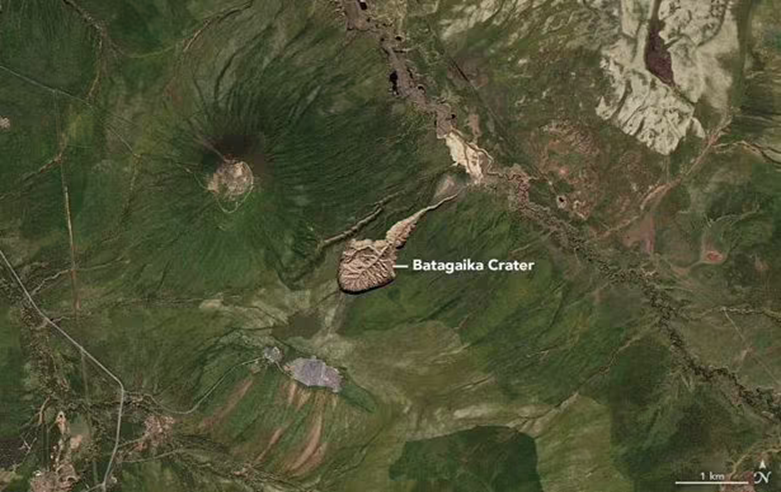!The emergence of the “crater of hell” in Siberia and nothing could slow its growth

The inhabitants of Batagai in Yakutia in Russia discovered a huge opening in the earth, and some attributed the reason for the existence of this growing crater to the supernatural, believing that it was a passage to the underworld, and it should be monitored closely.
Reports indicate that the sinking mass continues to grow and affect the landscape, with images of Batajica crater showing a huge mass of land sinking and seeming to drag everything around it.

But the real reason for that crater is the thawing of permafrost, as the land at this site was permanently frozen during the Ice Age 2.58 million years ago.
When the forest area was cleared in the 1960s, sunlight reached the ground and began to heat it. The ice in the soil began to melt, causing the ground to contract and shrink.
More 'mouths to hell' may soon emerge around the world due to the impact of global warming on temperatures.
As the Earth continues to warm, it may lead to more access to such surfaces, which will melt the ice deep within.

Batajica crater has been measured since the 1980s and is currently about 1 km long and 86 meters deep.
The open ground displays layers of soil between 120,000 and 200,000 years old, and possibly up to 650,000 years old according to the initial dating of the lower stratum. This makes it the oldest exposed submerged area in Eurasia.
This stagnant movement is unstoppable and unstoppable, it is currently growing about 20-30 meters per year, while expanding at this pace will cause the crater to continue engulfing everything around it until it settles.
Most disturbingly, locals report hearing a loud noise coming from the site. The people who inhabit the area have a well-connected culture with the environment, depend on hunting for their livelihood, and hold to supernatural beliefs about the spirit world.
Researcher Julian Morton studied the hole and found only rock, no gate or passage at the bottom.
While an expedition in 2018 by the Northeastern Federal University and Kendai University in Japan found a young horse preserved in Patajai, the foal was approximately 42,000 years old and had preserved its hair and internal organs intact.
While the "pit of hell" has nothing but derision, locals will remain wary of the mysterious and ever-expanding site.
Source :Websites

